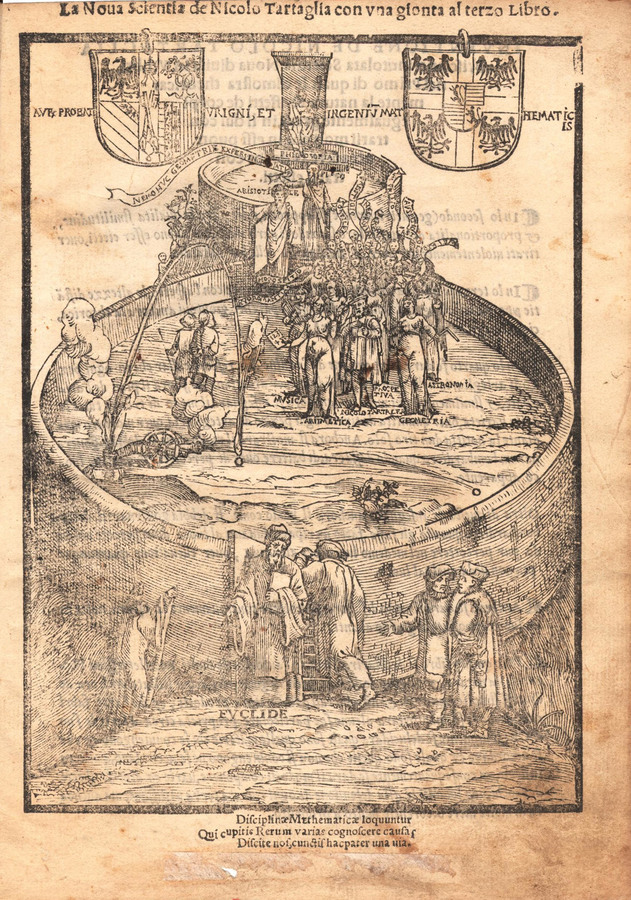In 1537, a mathematician from Brescia, Nicolò Tartaglia (1500–1557) published a work entitled Nova scientia.1 It is this work that established the modern science of ballistics, as characterized by the search for a mathematical understanding of the trajectory of projectiles. Tartaglia’s intentions were to create a science based on axioms and more geometrico, fundamental to the entire subject of mechanics, starting from a limited number of principles and arriving at a series of propositions through a process of rigid deduction. The methodological model Tartaglia intended to follow was the one he was able to extrapolate from works like Euclid’s Elements.
Tartaglia himself related what had motivated him to take on this work. His motive was fundamentally practical and connected with the activity of the sixteenth-century bombardier. In a letter dedicated to Francesco Maria Feltrense della Rovere, Duke of Urbino, which opens the Nova scientia, the author relates how in 1532, while he was living in Verona, a friend who was a bombardier asked him at which angle the barrel of a cannon should be elevated to achieve the longest possible shot. Even though Tartaglia himself admits that he is no expert in such specialized areas connected to military activity, he continues his own account by asserting that, having made some calculations, he was able to establish on geometric and algebraic grounds that the maximum range would be achieved if the barrel of a cannon were raised at an angle of 45 degrees above the line of horizon. From a perspective confined to the development of ballistics, this is Nicolò Tartaglia’s principal scientific achievement. However, from a wider perspective, more specifically from the perspective of the entire history of the development of mechanics during the Renaissance, Tartaglia’s most important achievement is having demonstrated in 1537 that an exact science of ballistics was possible, based on the application of mathematical and geometrical methods. Challenged by the knowledge and experience of the bombardier, Tartaglia made an enormous contribution to the field of mathematical physics. In the following, first an in-depth and detailed analysis of the Nova scientia is presented, by means of which the limits of the explanatory power of Tataglia’s theory are clearly identified. Then a short chapter on Tartaglia’s method and one on his intellectual profile serve to introduce the reconstruction of the links between Tartaglia’s theory and the contemporary developments in the art of war due to innovations in the field of metallurgy. Once both the theoretical framework of the new science of ballistics and its technological context have been reconstructed, the argument concludes by analyzing the epistemic function of the artillerists’ practices and instruments, which provides an explanation for the mechanisms of emergence of a new theoretical field in the sixteenth century and from the perspective of a historical epistemology.

Fig. 1.1: Frontispiece of Nicolò Tartaglia’s Nova scientia.
Footnotes
Tartaglia 1537. Throughout this paper reference will be made to the 1558 print run: Tartaglia 1558. The 1558 print run is the second reprint of the second edition published in 1550, while the first reprint was in 1551. It was subsequently reprinted again in 1562, 1583 and 1606. For further details regarding the story of the editions of the Nova scientia, see also Cuomo 1997.
